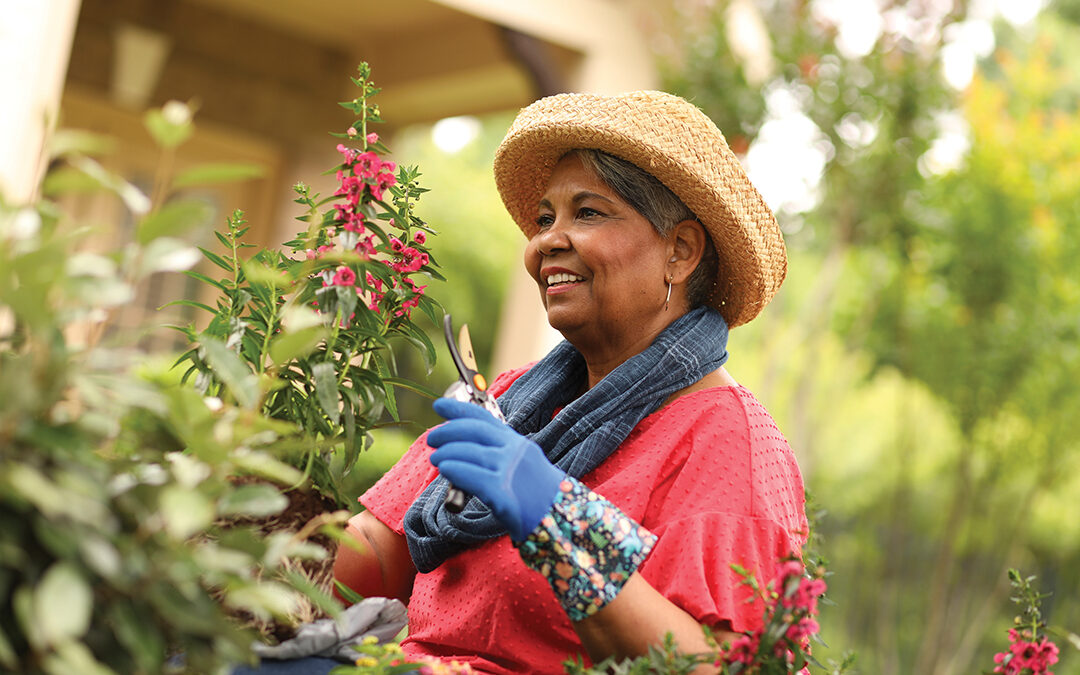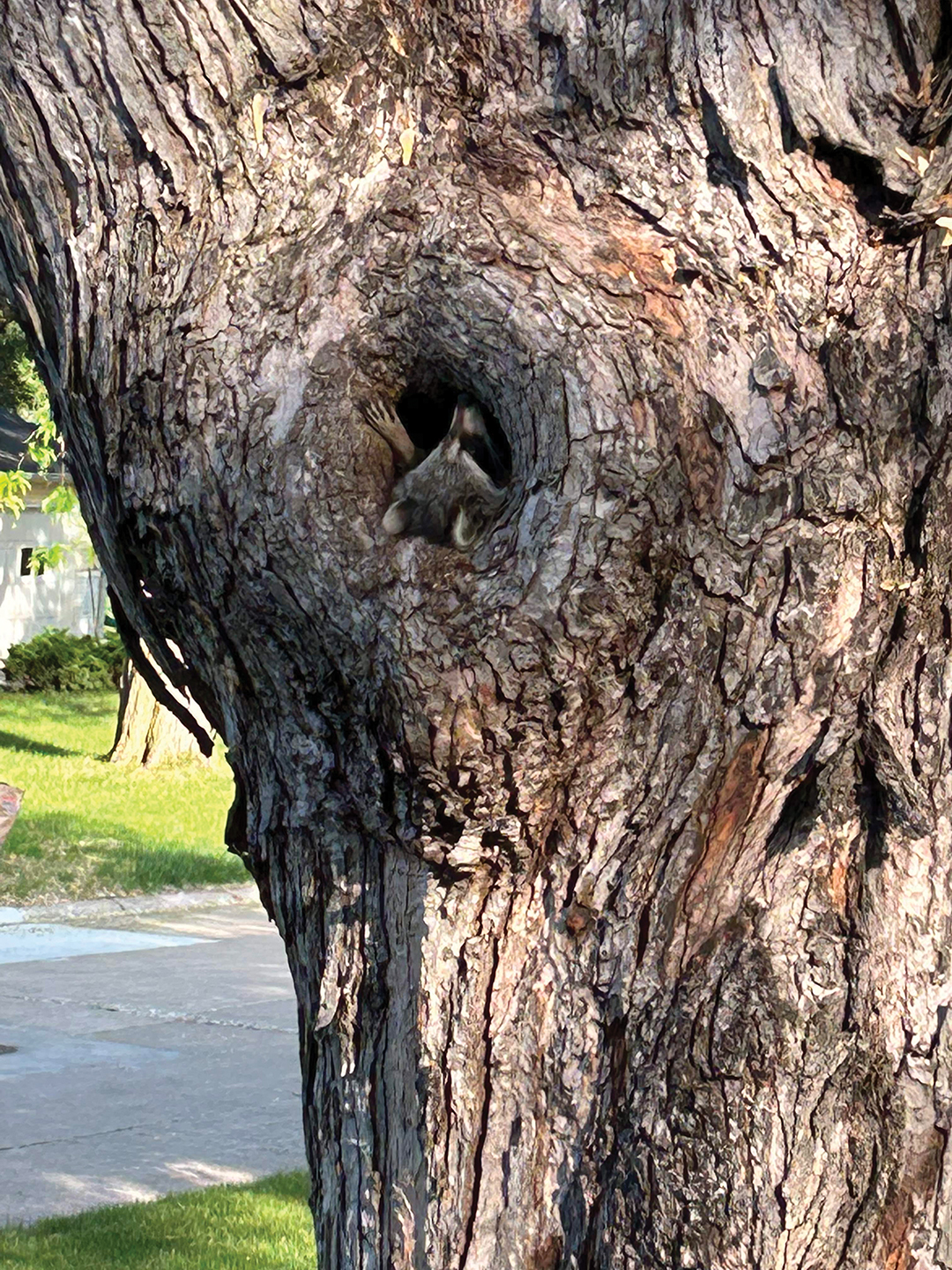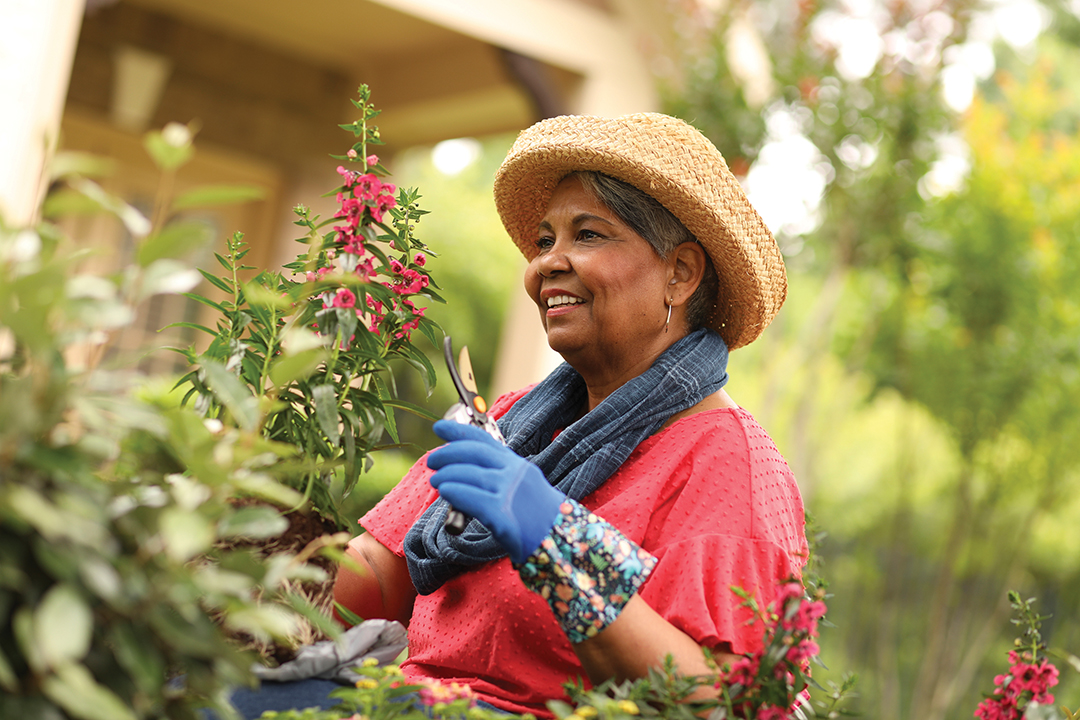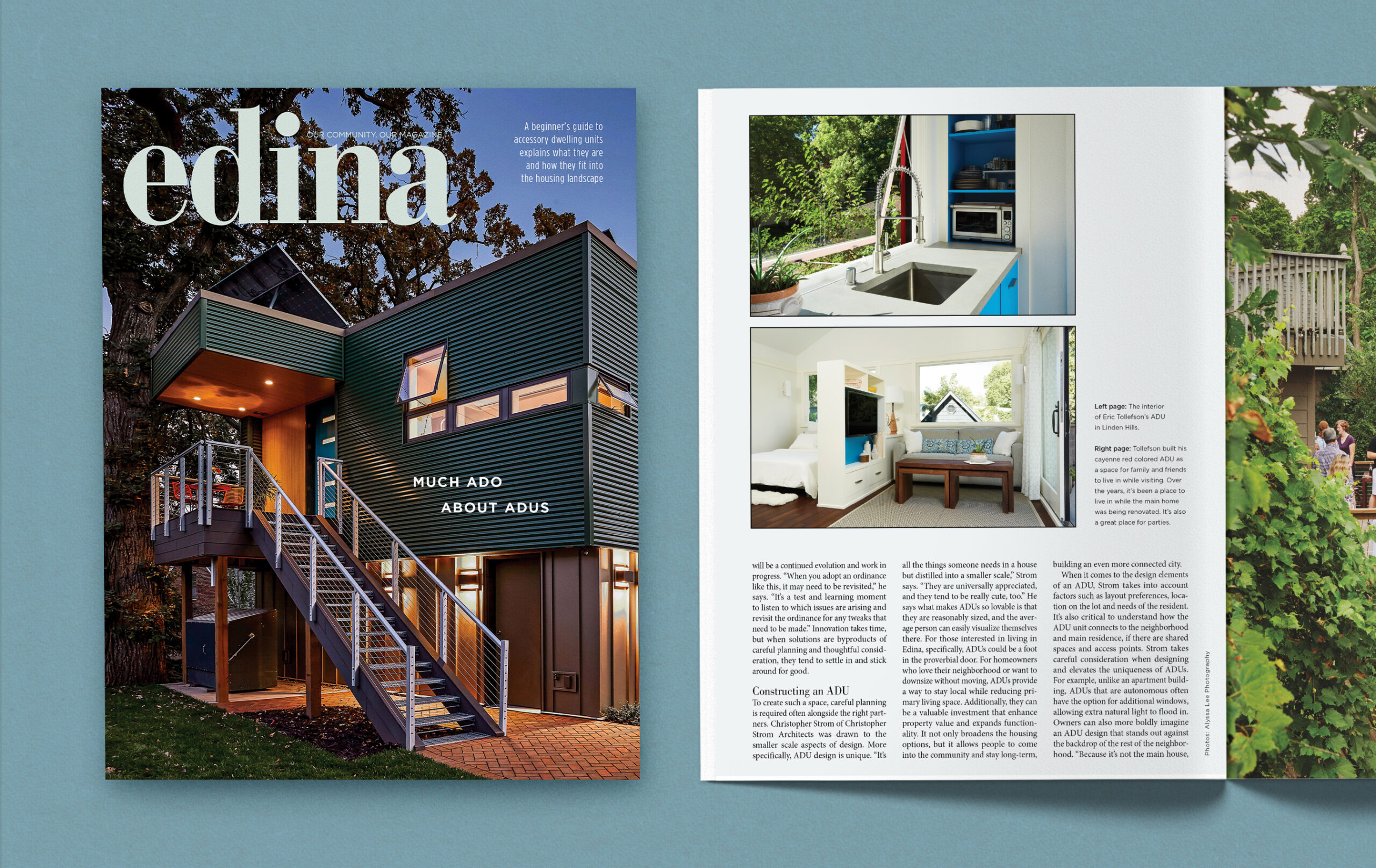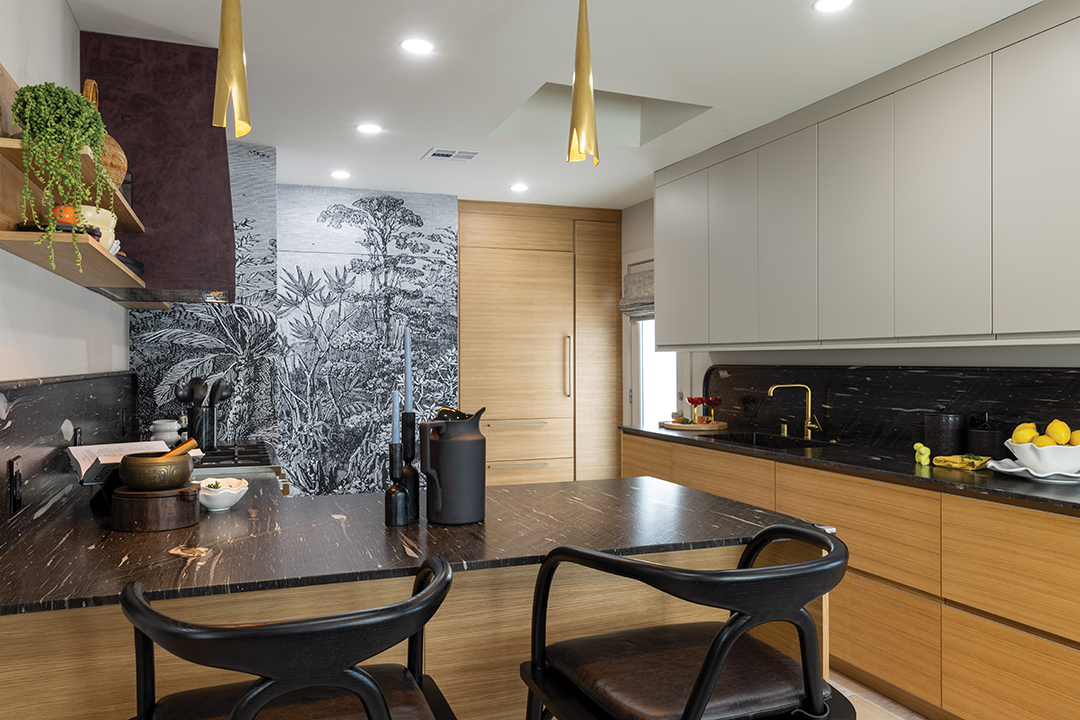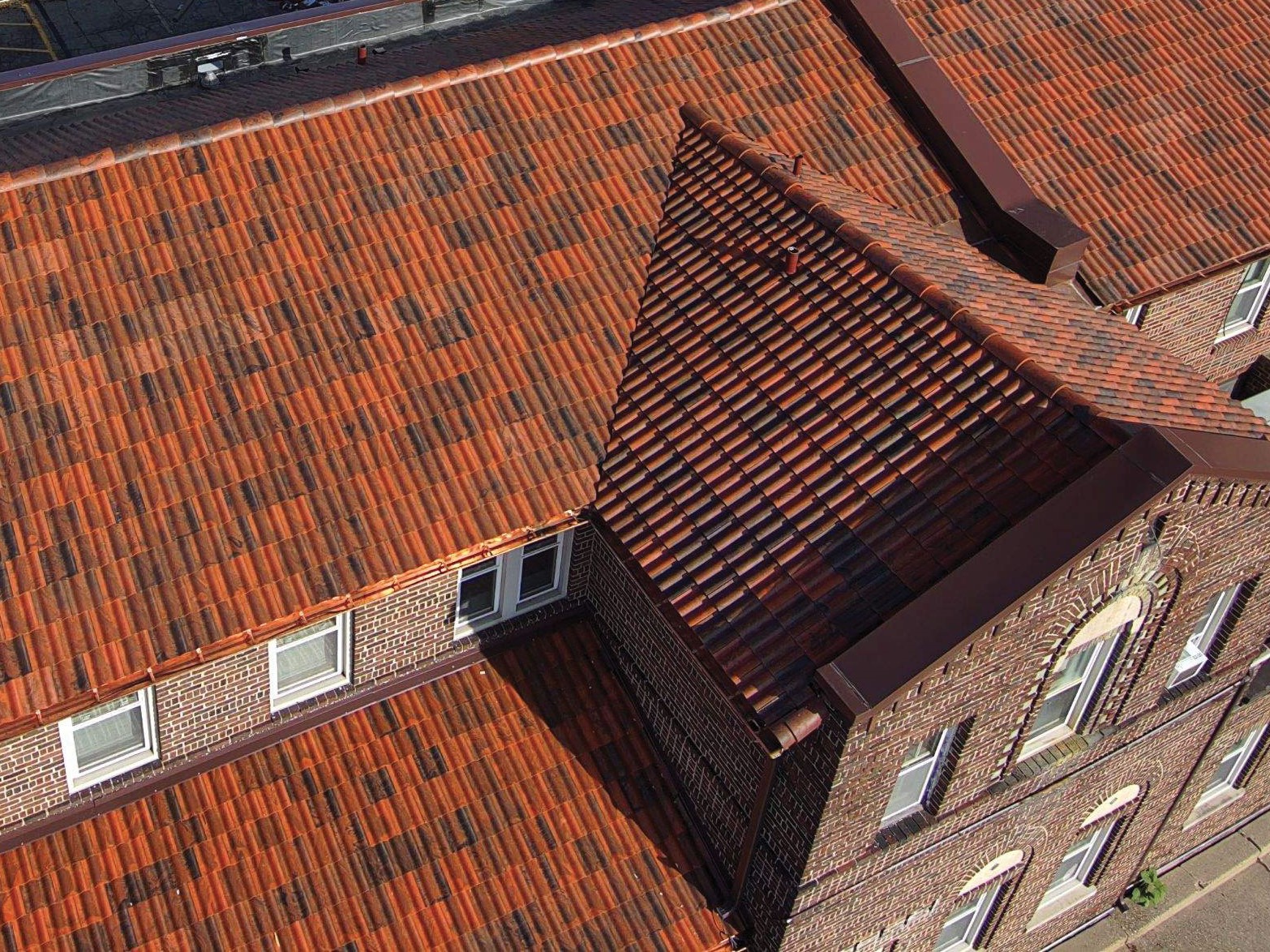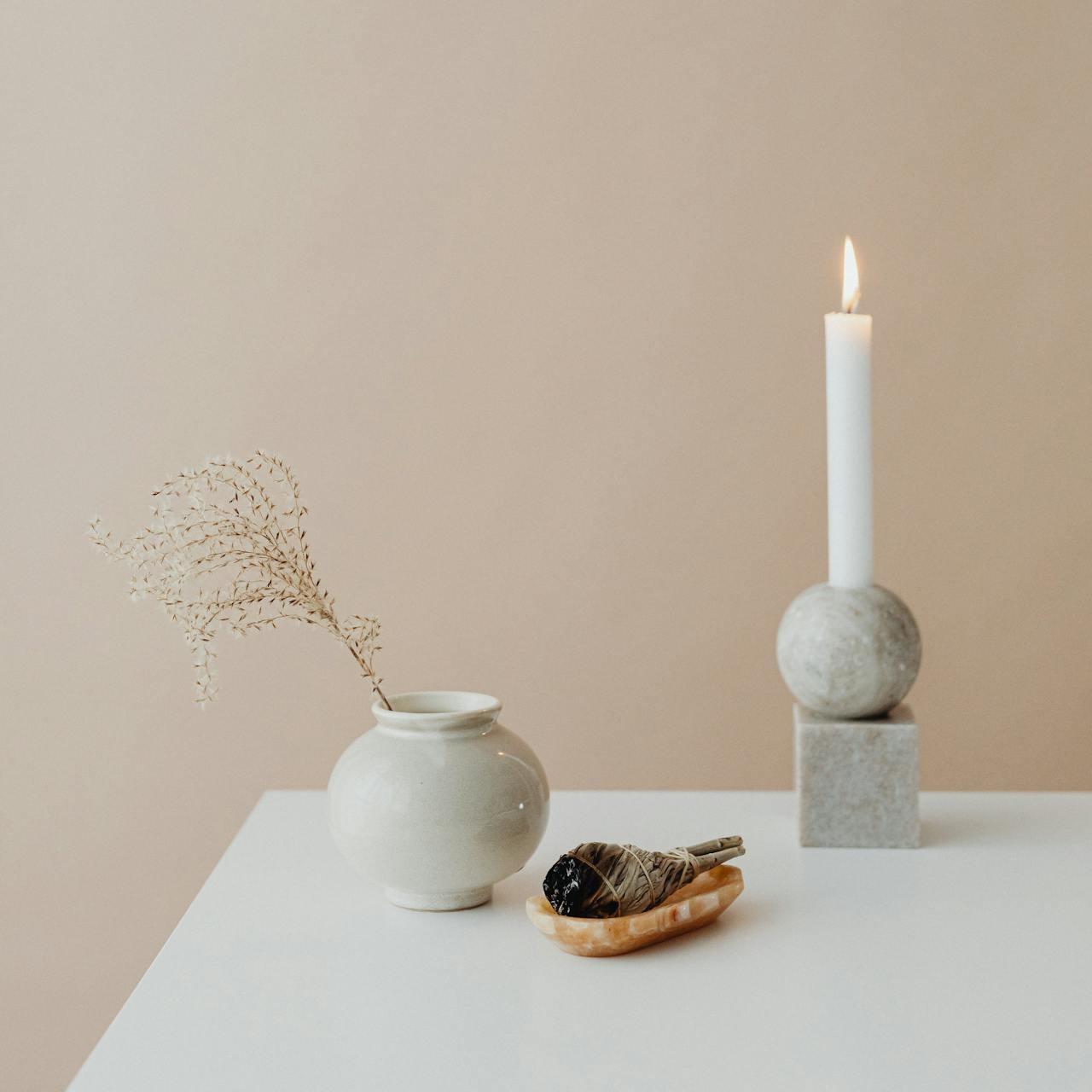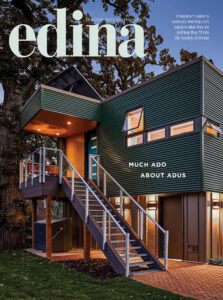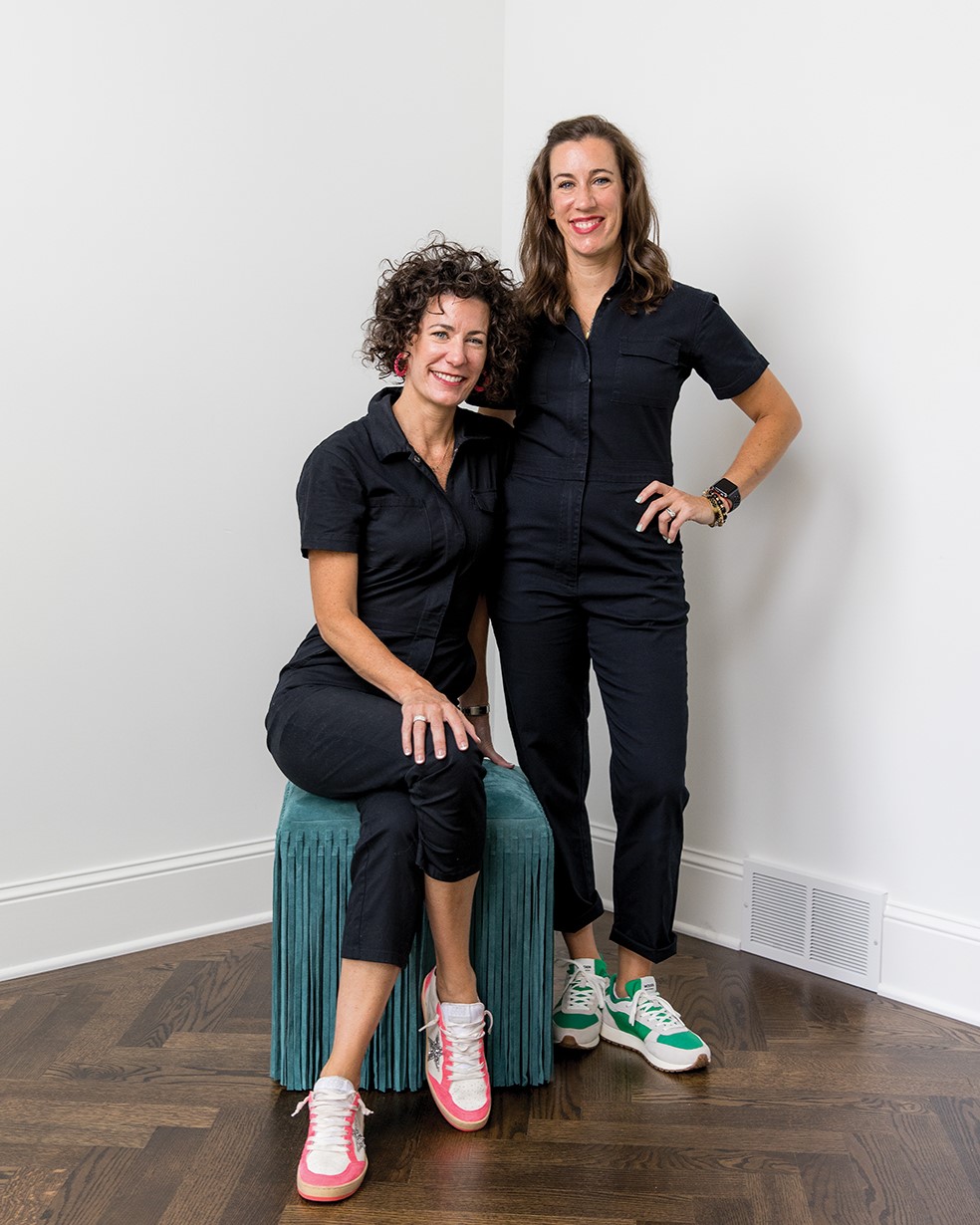
Sister duo Lindsey (Brinkman) Uselding and Kirsten (Brinkman) Meehan co-host HGTV’s Renovation 911. Photo: Chris Emeott
Edina natives co-host hit emergency restoration show and flip HGTV model “upside down” in the process.
When was the last time you snaked your drains? HGTV’s hit show Renovation 911 co-host Kirsten (Brinkman) Meehan, co-owner of Ungerman, Inc., says although, “It’s really gross, so put on a pair of rubber gloves,” it’s something you should be doing once a month to minimize potentially serious damage from hair clogs and backups.
Did you turn off the water the last time you left for vacation? “Even if you’re only gone for a week, shut it off,” she says as she looks at her sister Lindsey (Brinkman) Uselding, who oversees logistics and insurance for Ungerman, and is the other half of the HGTV home emergency restoration show.
Growing up in Edina in the Brinkman household, the two recalled being on construction jobsites way back when they were little. “I grew up doing demo and paintwork for my dad,” Meehan says. “One of my earliest memories is spending Saturdays together and dad always stopping to get one last thing done on a job,” Uselding says, as the two of them talk fondly of their childhood, helping their dad, Ted Brinkman, who joined Ungerman, Inc., as its first employee in 1977.
Since then, the two have become co-owners at Ungerman, Inc., a restoration, reconstruction and renovation company serving the Twin Cities Metro area. “My role is taking an emergency call when someone has damage to their home, talking about next steps, getting them through the insurance process,” Uselding says. “I take over with design and build and help put it back together,” Meehan says. “Lindsey gets them through the emotional part, and I get to help start making it beautiful again. We love our jobs.”

The Ungerman entryway and living room did not make an appearance on TV. This is your exclusive look at how those projects turned out. Check out HGTV to see the full episode.
After: Meehan and Uselding walk through the new entryway and stairwell.
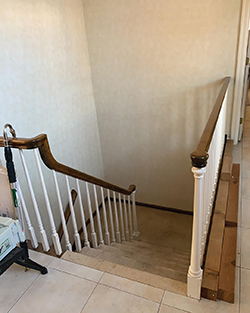
Before: 1990s stairwell with mismatched colors and carpet. The main floor was tiled.
They love their jobs so much that HGTV turned their typical eight-hour workdays into an eight-part series on mitigation restoration. But the show, just like a restoration, didn’t happen overnight. Meehan says it took about four years, along with many short video clips shot on a job site along the way, to finally get Hollywood to notice.
Meehan’s best friend in Los Angeles knew a producer who found hosts for shows. Together with friends and family, they made sizzle reels and sent in clips.
“We never expected to make it to the next step, but the production company continued to ask for more footage and more about our business,” Uselding says.
By all accounts, the pilot was a huge hit, and, thanks to “really positive test ratings,” the series was picked up. “All we knew was they offered us seven more episodes that were filmed over many months from 2021 through 2022. Each episode followed us through two emergencies,” Meehan says. The format includes work on an entire home that is the focus of the hour, with a smaller emergency, one-room project that gets introduced and revealed in the middle of the show. “Two reveals and two stories, so people stay to watch the full episode,” she says. The pilot premiered at the end of March, and the first season wrapped up in mid-May.
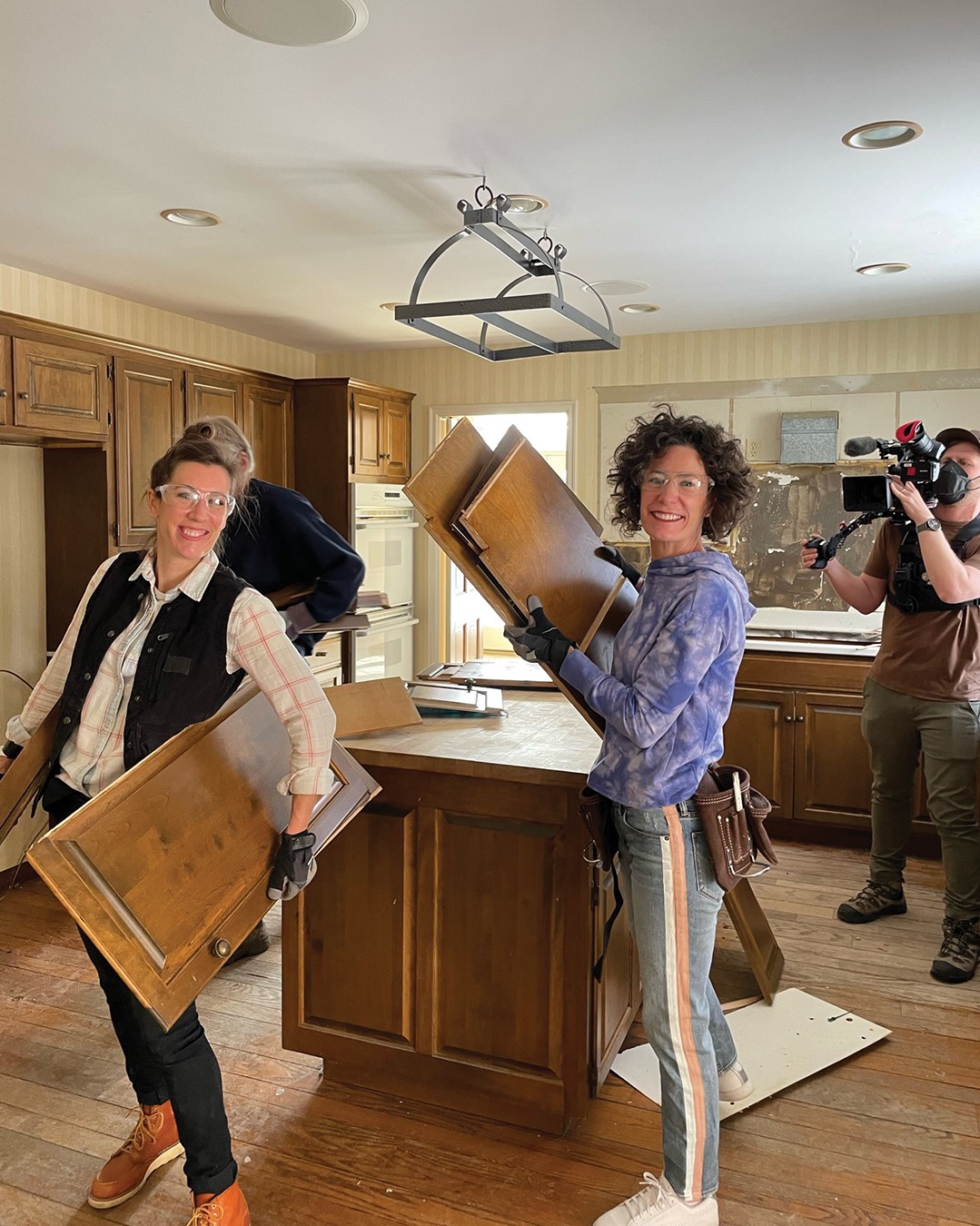
Kirsten Meehan and Lindsey Uselding filming an episode about the home of their colleague and his wife, Ron and Sonia Ungerman. The home had ice dams that caused water damage throughout the house. Photo: Ungerman,
“HGTV has never followed insurance restoration,” Uselding says. “So we had to flip their typical model upside down.” The two explained they would review a project their company would be handling to determine work scope and whether it would be a good match for HGTV.
“We have a casting producer, and we needed to make sure we were offering a variety of emergency projects and that we would be able to finish a job on a very tight production schedule,” Meehan says. “You build this little crew—our showrunner and producers lived in L.A.” The production company was in Canada, and camera and sound crews were out of Minneapolis.
Meehan says they would show up to a job with eight or nine added film crew on top of their regular workers just to get started, and neighbors would peek out their windows. Though there is no other incentive for a homeowner to invite cast and crew into their homes, both women agreed their clients were patient and stayed positive as the co-hosts worked to keep the restoration flow as normal as possible.
“Unlike many other home shows, we were in charge of our contractors, scheduling and budgeting, as well as design and the hands-on work to complete the project. These are our real clients, and we would have worked with them with or without a show,” Uselding says.
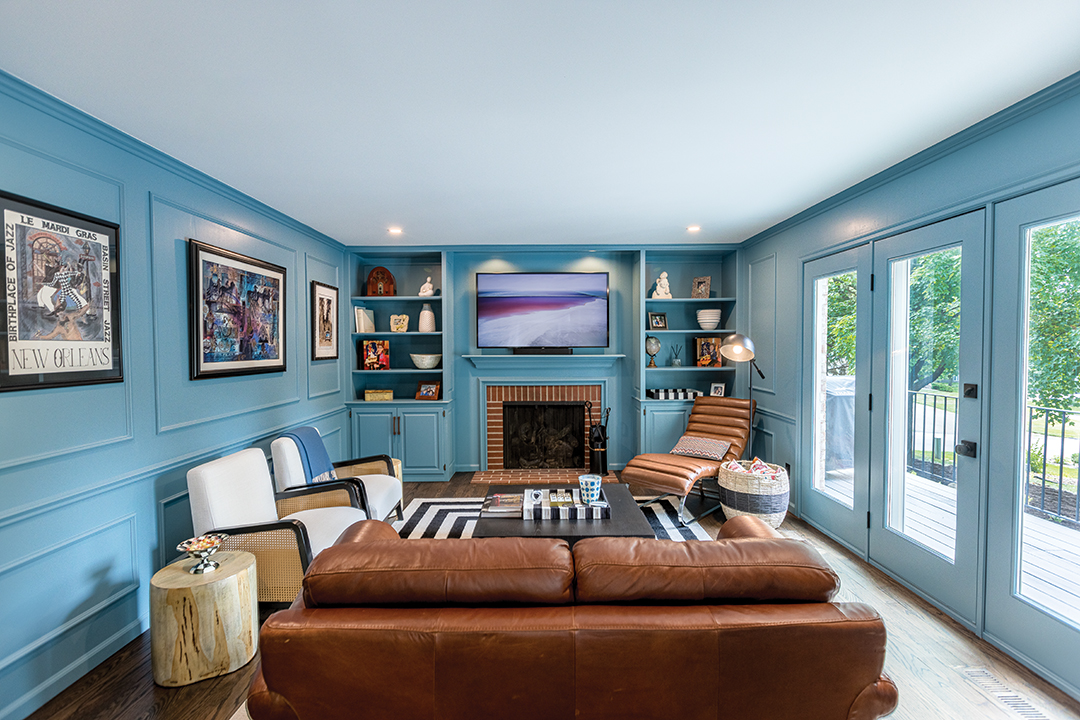
After: The remodeled den with a repaired ceiling. The wood panelling was painted blue and wainscotting remained to add texture. Warm leather accents finish the overall look. Photo: Chris Emeott
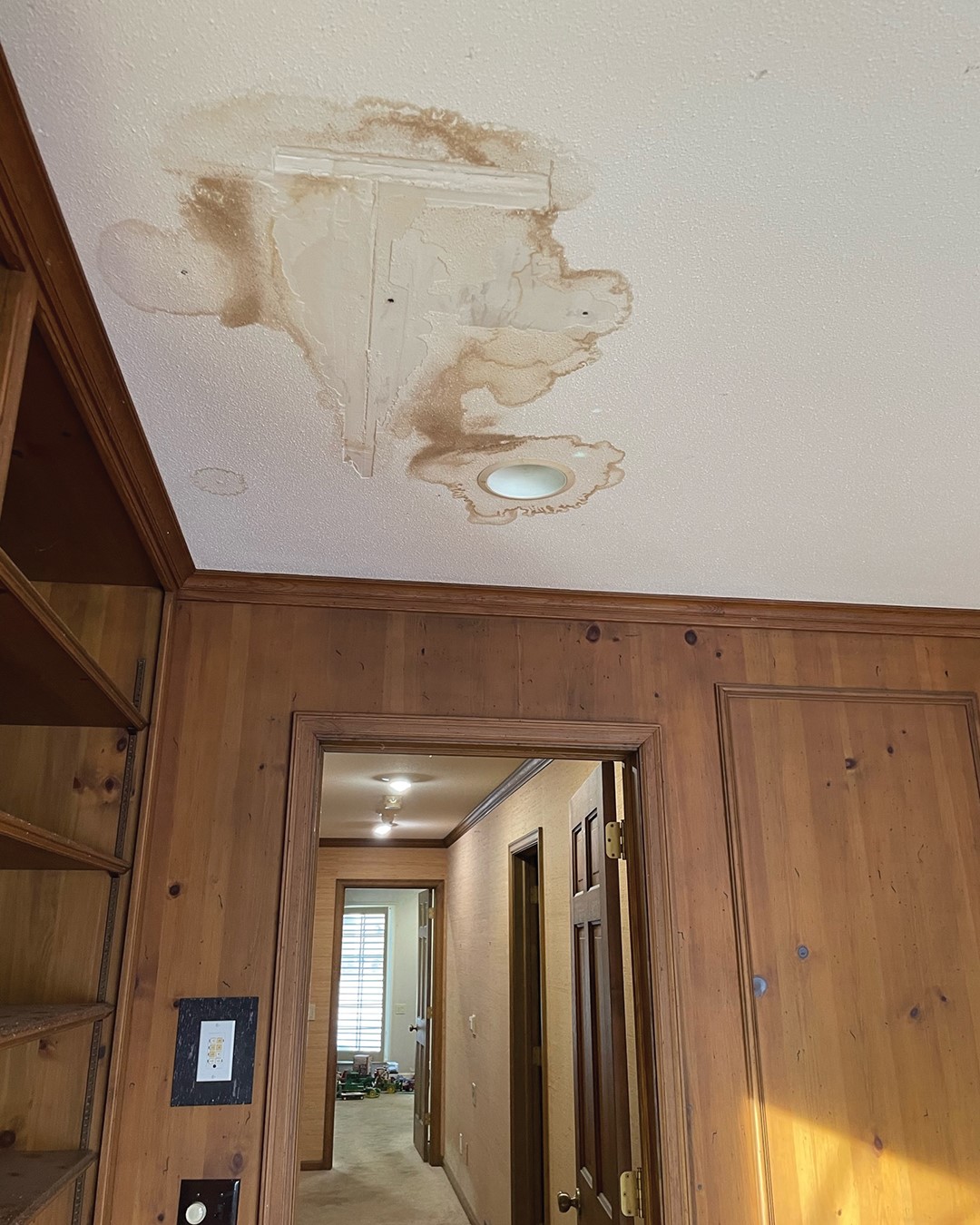
Before: Ice dams created water damage to the den’s popcorn ceiling. Photo: Ungerman,
The extensive timeline took both hosts away from their regular lives, with long days on camera, away from family routines and their other clients. “Our usual jobs don’t find us working on site together too often,” Meehan says. “[Lindsey] lifted me up when I needed energy, and I lifted her up when she needed a laugh. Our level of friendship and sisterhood is unparalleled.”
The two shared a bedroom growing up; Meehan says they had their own rooms for one week at one point, “But we didn’t want to be apart, so we kept sneaking into each other’s rooms.” Their sense of connection and friendship is palpable on and off the show and has attracted viewers and fans across the HGTV platform.
They both agree that the heart of their work is their goal to respond to people who need help. “It’s not just remodeling, not design,” Uselding says. “It’s a chance for us to showcase how we help people through the most emotional time in their life to the most elated, happiest moment to see that journey and share the outcome with the world.”
One episode in the series followed the restoration process after lightning tore through a home during a thunderstorm. Most of the family was four hours away when the house lit into flames, and the family’s teenagers, along with neighbors, began to gather in the street in the downpour. “Talking with them during our first meeting, you could see how they were going to be affected forever,” Meehan says. “At the reveal, they walked into the room where their last memory was fire raging up the wall, and the homeowner said, ‘I could have never imagined this room ever being this beautiful.’”
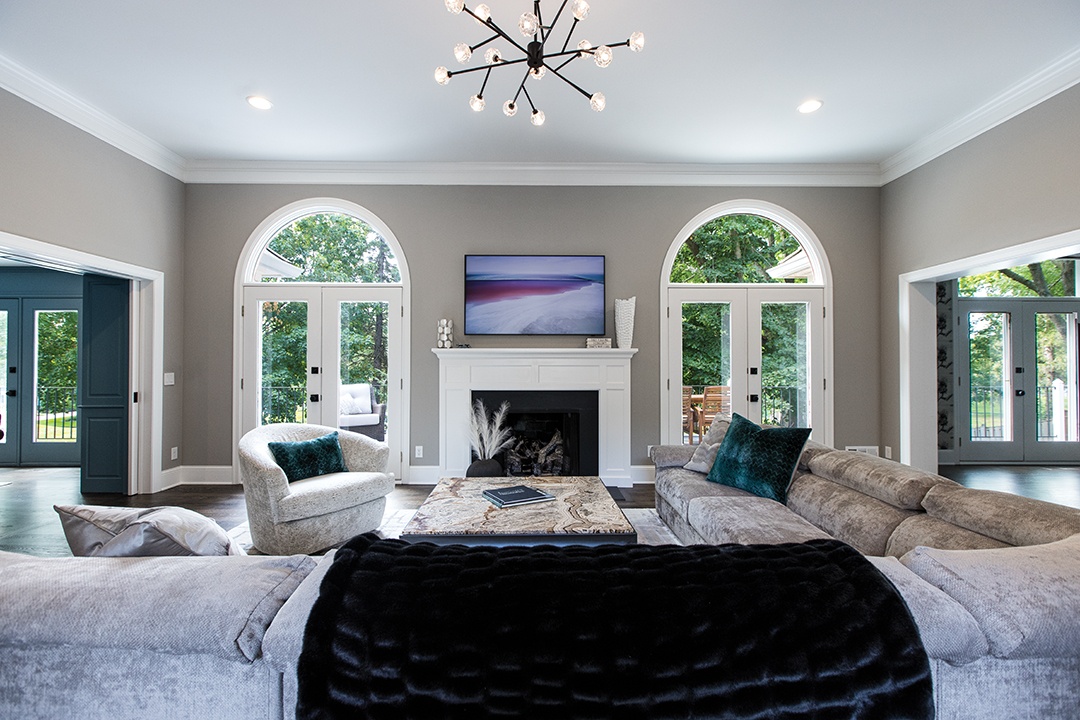
This newly renovated living room is an elegant and bright environment that leads into the den seen above. Photo: Chris Emeott
A favorite part of each episode for both is the takeaways they share. “It all comes down to the practical tips we can leave with our viewers. Clients ask us what they could have done to prevent the property mishaps they’ve experienced in their homes. And we started turning those tips into a regular part of the show,” Uselding says.
Those tips sparked a new idea, which led to a new company the two just launched. By combining savvy solutions for home damage prevention with compelling design, Practical Home was born. The online outlet combines tips, tricks and fun facts focused on helping women navigate home improvement along with safety solutions for purchase.
“You’d be surprised how much time it takes to create an affordable, pretty plunger,” Meehan says. “Our crew kept telling us how much they learned working on our job sites. The shows have a pretty reveal and some great family emotions, but we also wanted people to see a tip and think, ‘I have to go check this out,’ so that there are educational opportunities for viewers to put safety and prevention to work.”
With the sisters’ new venture and the 400 clients they’ve worked with in the last year, the show hasn’t stopped them completely. And now they wait to see if they get the nod for season two.
Protect Your Home From Major Mishaps
The Insurance Information Institute (III) tracks homeowners’ insurance claims and says fire and lightning claims are the most expensive mishaps in a home, costing an average of $77,340 per claim in 2020. About one in 60 homes will face water damage or a freezing event that comes from disasters like burst pipes and leaking roofs. Nearly half of all homeowner’s insurance claims come from wind and hail (tornados, hailstorms, hurricanes).
Here’s a checklist to help minimize emergencies:
- Walk around your home and ask, “What could hit my house?” Prune trees, strengthen outdoor structures, put away movable objects ahead of a storm, and clear gutters and downspouts to prevent ice dams and backups in the winter and spring.
- Most water damage comes from inside a home—think dishwasher, sink and toilet. Check hoses for cracks or corrosion, and check seals for damage or extensive wear. And know where your main water shut-off valve is located in your home. Turn off water before leaving for vacation—but make sure the home will stay at 55 degrees or warmer while you’re gone. Don’t turn off the water to a fire sprinkler system.
- Use care with combustible items, like oven mitts, around an open flame. Make sure outlets/circuits are not overloaded. Fire is the most costly, disruptive and devastating home disaster, according to the III. Make sure to never throw water over a pan on fire when cooking. Smother the flames with a lid or towel to prevent grease fires.
- Record your home. Walk through with a camera, noting what youhave to make potential insurance claims easier if disaster does strike your home. Keep these videos in the cloud and virtually accessible and not on something that could burn with the fire.
- Visit Renovation 911’s dynamic disaster duo’s new website, Practical Home, for more tips.
Ungerman, Inc.
Facebook: Ungerman, Inc.
Instagram: @ungermaninc
Practical Home
Instagram: @practicalhomeofficial
TikTok: @PracticalHomeOfficial
Instagram: @kirstmeehan
Instagram: @lindsey.uselding


